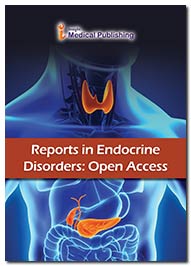Selecting Intermittent Fasting Type to Improve Health in Type 2 Diabetes: A Machine Learning Approach
Shula Shazman
Mathematics and Computer Science Department, The Open University of Israel Raanana, Israel
Abstract
Intermittent fasting (IF) is the cycling between periods of eating and fasting. The main types of IF are complete alternate-day fasting; time-restricted feeding (eating within specific time frames such as the most prevalent 16:8 fast, with 16 hours of fasting and 8 hours for eating); religious fasting such as the Ramadan (occurs one month per year, with eating taking place only after nightfall). IF can be effective in reducing metabolic disorders and age-related diseases by bringing about changes in metabolic parameters associated with type 2 diabetes. Questions do remain, however, about the effects of the different types of IF as a function of the age at which fasting begins, gender and severity of type 2 diabetes. In this paper we describe a machine learning approach to selecting the best type of IF to improve health in type 2 diabetes. For the purposes of this research, the health outcomes of interest are changes in fasting glucose and insulin. The different types of intermittent fast offer promising non-pharmacological approaches to improving health at the population level, with multiple public health benefits.
Abstract: Intermittent fasting (IF) is the cycling between periods of eating and fasting. The main types of IF are complete alternate-day fasting; time-restricted feeding (eating within specific time frames such as the most prevalent 16:8 fast, with 16 hours of fasting and 8 hours for eating); religious fasting such as the Ramadan (occurs one month per year, with eating taking place only after nightfall). IF can be effective in reducing metabolic disorders and age-related diseases by bringing about changes in metabolic parameters associated with type 2 diabetes. Questions do remain, however, about the effects of the different types of IF as a function of the age at which fasting begins, gender and severity of type 2 diabetes. In this paper we describe a machine learning approach to selecting the best type of IF to improve health in type 2 diabetes. For the purposes of this research, the health outcomes of interest are changes in fasting glucose and insulin. The different types of intermittent fast offer promising non-pharmacological approaches to improving health at the population level, with multiple public health benefits. Biography Shula Shazman received her B.Sc. in Computer Sciences from the Technion, Israel in 1993. In 2011 she has finished her M.Sc. + Ph.D. in Biological Sciences, In the faculty of biology, at the Technion, Israel. The title of thesis is 'Computational approaches for characterizing Protein-Nucleic-Acid Binding'. During 2011–2015 she has been a postdoctoral fellow in the Department of Biochemistry & Molecular Biophysics, Columbia University, New-York, USA. Currently Shula works at the Department of Mathematics and Computer Science, The Open University of Israel. Their current projects are 'Disordered proteins' and 'Intermittent Fasting as a tool to treat Type 2 Diabetes'.
Open Access Journals
- Aquaculture & Veterinary Science
- Chemistry & Chemical Sciences
- Clinical Sciences
- Engineering
- General Science
- Genetics & Molecular Biology
- Health Care & Nursing
- Immunology & Microbiology
- Materials Science
- Mathematics & Physics
- Medical Sciences
- Neurology & Psychiatry
- Oncology & Cancer Science
- Pharmaceutical Sciences
